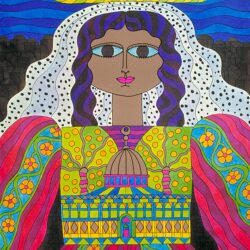Living Fashion: Women’s Daily Wear 1750–1950 from the Jacoba de Jonge Collection

Women’s Daily Wear 1750–1950 draws on the influence of fashion of the everyday lives of middle class women in Western Europe between 1750 and 1950.
Visitor information
Location
MoMu - Fashion Museum Antwerp
Description of the exhibition
In the 19th century, the growing social importance of the middle classes brought with it a new group of wealthy citizens who wanted to show off their status through their clothing and behaviour.
This stimulated consumption and fashionable activities amongst women in these social circles. Travelling, sports, walking, and shopping became new forms of passing leisure time, all requiring specific apparel. In addition to the clothes they wore, the organisation of their days also followed fashion trends. Mornings were for indoor activities, the afternoons were for visits and outdoor activities - each moment of the day had its own particular dress code.
Taking part in ‘high fashion’ increasingly became a must for an ever-growing group of consumers, but these women did not simply let themselves be dictated by fashion. They also helped form fashion through their own changing customs and living habits. As they still do today, consumers were frugal and creative with ever-changing fashions. Dresses were remade and sometimes completely transformed to fit the new, fashionable silhouettes. Reusing fabrics was perfectly normal, even for the upper classes.
On the basis of historical silhouettes from the extensive apparel collection of Jacoba de Jonge, now almost entirely incorporated in the MoMu collection, MoMu sketches a picture of the relationship between the fashion ideals of the day and the clothing that people were actually wearing.
Exhibition under the lead of
Curators: Karen Van Godtsenhoven & Wim Mertens | Scenographers: OFFICE, Kersten Geers & David Van Severen | With special thanks to: Kaat Debo & Jacoba de Jonge


